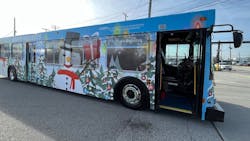MDOT MTA launches Office of Customer Experience
The Maryland Department of Transportation Maryland Transit Administration (MDOT MTA) has launched the Office of Customer Experience, a new department focused on improving how riders experience transit services at each stage of their trip. The Customer Experience Office will integrate performance management data, rider experience studies and real-time information, with the goal of creating impactful improvements for riders.
“The Customer Experience office will use data and feedback from riders to inform agency insights,” said MTA Administrator Holly Arnold. “These insights will echo the voice of our riders, fostering improved transparency and communication across the board.”
In its first major initiative, the office has created a Customer Experience Dashboard, replacing the Performance Improvement webpage, launched in 2019. The new dashboard will allow the public to track multiple service performance indicators, including on-time performance, ridership, service delivered, real-time information availability and operator hiring efforts. The dashboard will be updated regularly with additional metrics based on feedback from riders.
The agency has appointed Michael Helta as the chief customer experience officer to lead the department. With more than a decade of experience at the MTA, Helta has led various offices, including Capital Programming, Project Development and Innovation. He recently led the successful implementation of the agency’s real-time passenger information system across all transit modes throughout the agency.
Additionally, Roxana Beyranvand joins the team as the agency’s first director of rider experience. Leveraging her expertise in leading human-centered initiatives, Beyranvand aims to drive meaningful and impactful changes focused on improving the rider experience. She most recently was with the Baltimore Mayor’s Office of Innovation and Performance and has a strong background in transit community engagement.
In 2024, MDOT MTA says the Office of Customer Experience will lead the implementation of projects to gain rider feedback, including focus groups, internal riding campaigns, experience surveys, a rider liaison program and other initiatives to gain a better understanding of transit riders and how to improve their experience before, during and after their ride.
